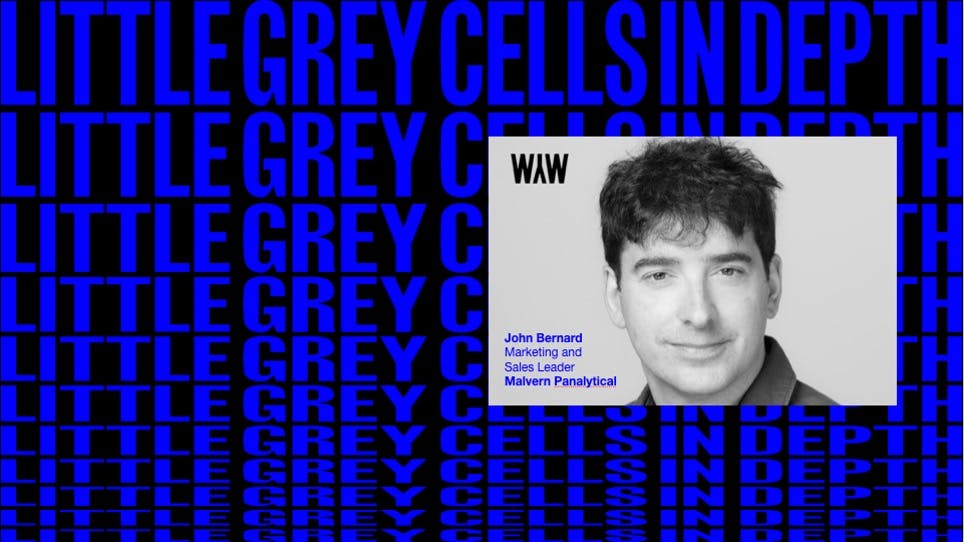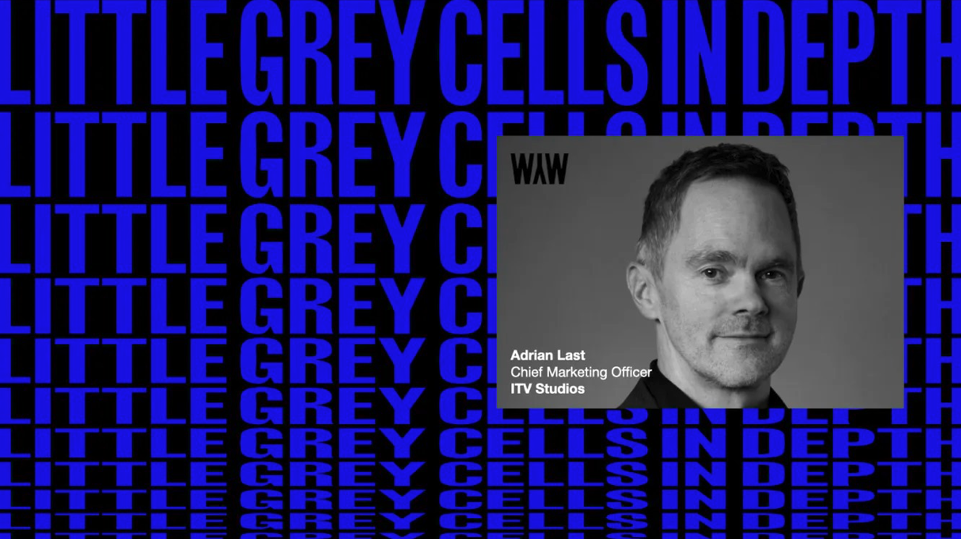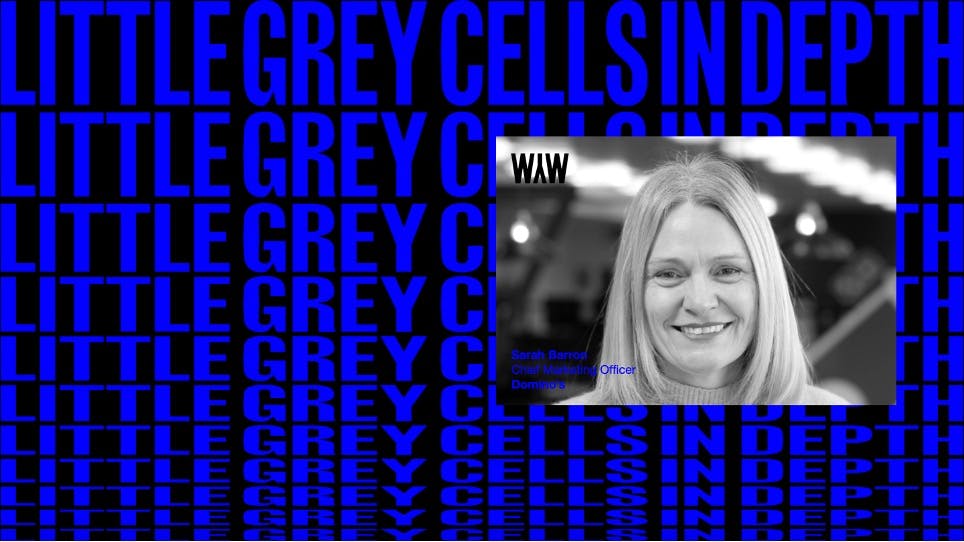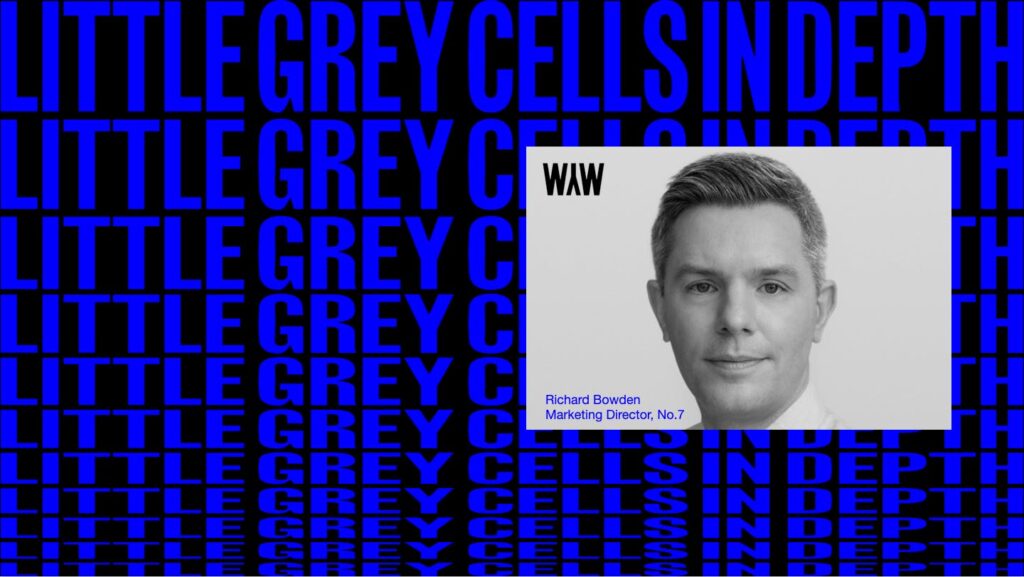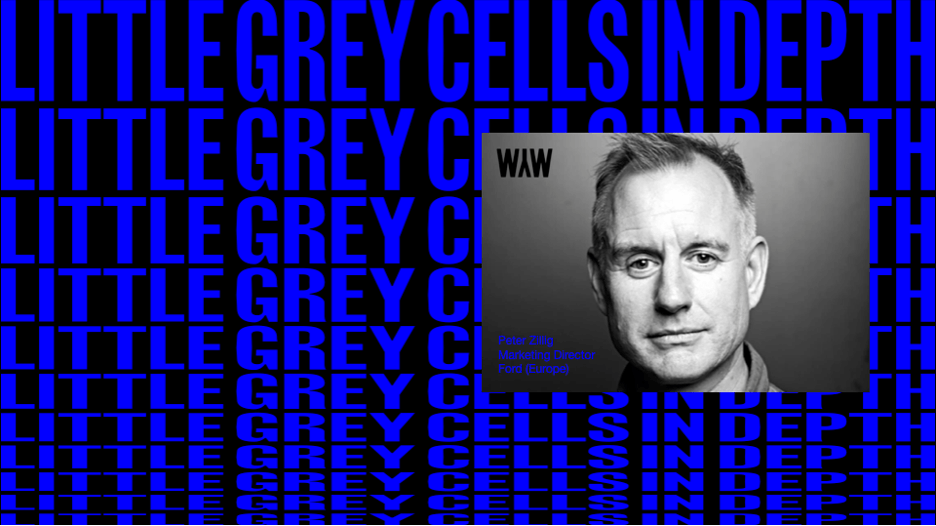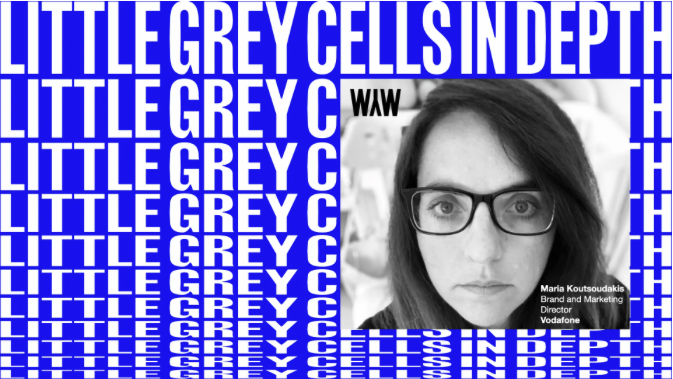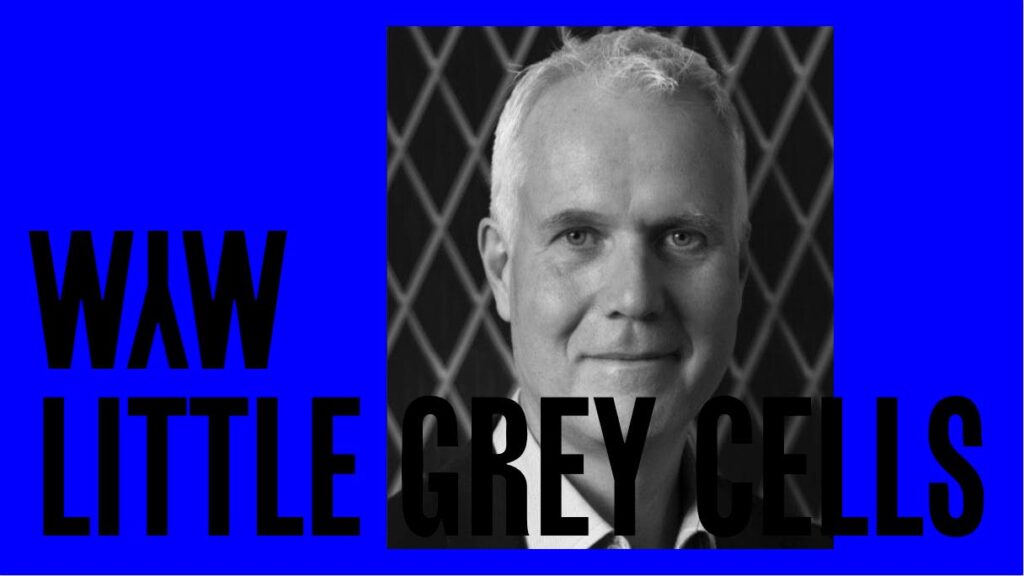Originally published: February 02, 2024
Little Grey Cells: John, you’re a super-accomplished marketer: in your last role as Chief Marketing Officer (EMEA) at Dexcom, the international revenue climbed 28% to $768m in 2022. 2023 set off to a similarly strong start, with first quarter revenue up 21%. Your career spans marketing at Siemens, Sony and Mozilla among others. Now you are at Malvern Panalytical. Please can you talk us through your marketing journey from college to now.
John Bernard: I did a degree in Marketing at the University of Huddersfield and once finished, was offered a place on the graduate trainee programme at Granada, now part of the ITV group. This was a fantastic induction into the life of the marketer – learning about budgets, agencies and core skills. It was very much at the start of the career ladder, but confirmed that marketing was a career to continue in.
Next, I moved into Ford Motor Company as an international events manager. That was a fantastic job – a really fun part of my career, spending many weekends at F1 events but running motor show events was my core role and a first taste of working internationally.
My career moved up a gear joining Siemens Mobile. This was my first time managing multi-million pound budgets, writing marketing strategy, running teams, working with partners such as the mobile network providers – Vodafone, Orange and T Mobile – and all at a time where the telecoms industry was booming.
Here, was able to analyse first-hand how marketing drove sales. From that point, I shaped my approach to marketing, with a mantra focussing on ‘Volume and Brand’. Every job I have taken since, has looked at how marketing can develop the Brand and in turn the customer’s purchasing intent of those products, which ultimately leads to selling ‘volume’ of products.
Achieving ‘Volume’ and ‘Brand’, to me, are the two key pillars to be a successful marketer.
From success at Siemens Mobile, was headhunted for a role at LG mobile, which was my first taste of working at a startup. As employee number three, built LG’s marketing team from scratch with the ambition to be ‘a top 3 mobile phone manufacturer in the UK and Europe’.
Here, it was invaluable to learn the value of Product Marketing – looking at the nuts and bolts of the product – in terms of being able to address customer need. I also started to work with Research and Development (R&D) teams on the development of products.
We launched the first touchscreen phone with the LG chocolate: an innovation that people loved and a follow-up phone, the LG Shine with the first capacitive touch-screen on a mobile phone, whose success paved the way for touchscreens to be core to smartphones’ form and function today.
It was such a time to be innovative and take risks. Alongside our media buyers and JC Decaux, we developed the world’s first outdoor physical adverts followed up by digital outdoor, now commonplace today. JC Decaux provided a number of 48-sheet sites with a huge 10 foot long fake model phone that physically moved.
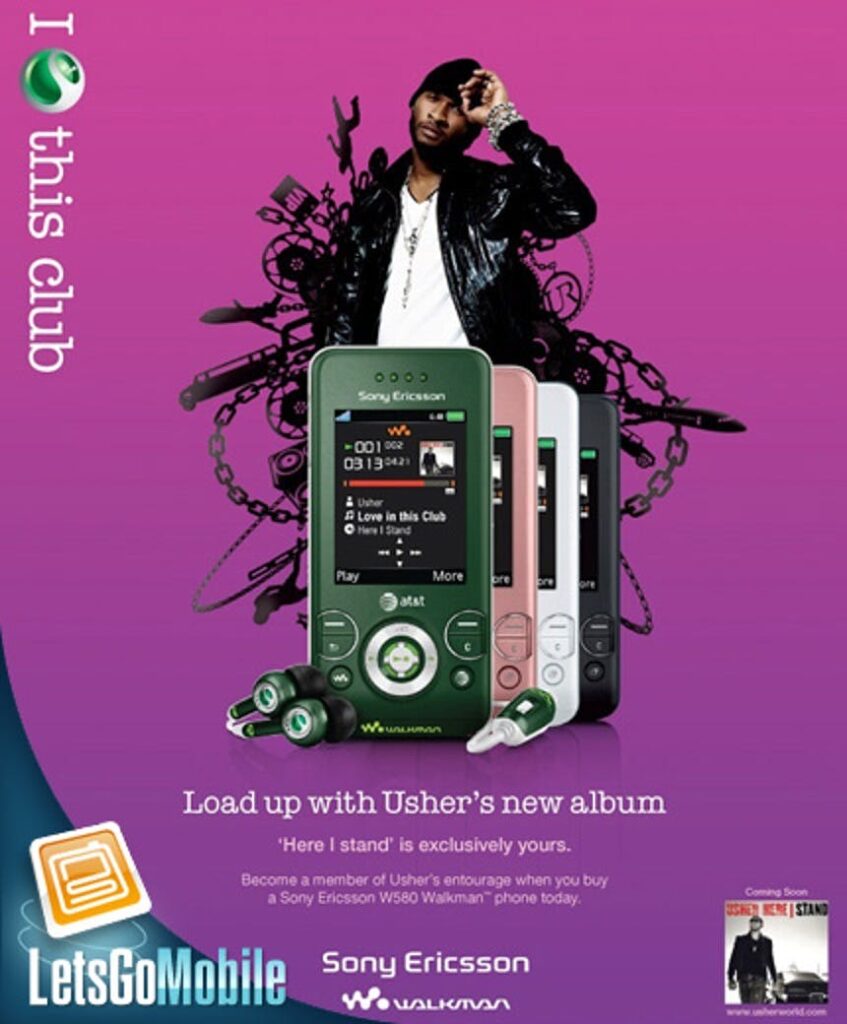
I was then headhunted into a senior global marketing role at Sony Ericsson, another innovative organisation. At this time, software and apps were becoming as much as a focus as the mobile phones themselves, Facebook, Twitter and of course Google were becoming more prominent. As a result, I pivoted to running Global Marketing at Mozilla, the Brand people more commonly know as Firefox. Mozilla combined two of my loves: mobile phones and technology, with a strategy to get the next billion online across Africa, South America, Southeast Asia, and parts of Eastern Europe. It was a fantastic ride serving under-served markets and a second experience working in a startup.

After four successful years, I was head-hunted again – this time to be ‘employee number one’ in a medical-devices start-up called Dexcom, albeit a start-up with an HQ and a few thousand employees in San Diego. My role was to be in charge of marketing – but I would wear many hats working across all of the different departments, especially helping to set up commercial functions and local country teams.
That all leads to today: globally, leading Sales and Marketing for Malvern Panalytical, part of the Spectris Group.

In summary, my career has been very much in tech, working in both startups and mature organisations. Setting, then hitting KPIs and financial targets. On a personal level, was lucky enough to win Marketing Week’s ‘Marketer of the Year’ in 2013; and was bestowed a Doctorate in Marketing from the University of Huddersfield – which was very humbling – in 2018. In addition, was awarded the Marketing Society’s ‘Inspirational Leader of the Year’ in 2019, so feel very fortunate to be recognised for the work achieved.
We should do more as marketers to show the business world that marketing is a key component to growth. As marketers in our own right, we’re driving the business more than any other part of the organisation, and we can prove it now with Marketing Mix Modelling – identifying the channels where things are going well and channels where you should be divesting.
This makes redundant the oft-quoted comment ‘Half the money I spend on advertising is wasted; the trouble is I don’t know which half’. We’ve become more of a science and as a marketing industry, and we’re better for it.
LGC: I was attending a lecture recently by a leading Harvard professor – a specialist in strategy. He was explaining that the three C’s of marketing and a business strategy are the same: company, competition, and customer. He argued that strategic thinking for business and marketing have converged. My question is: how important is it that senior marketers are at the table for key business decisions?
JB: So important. As marketers, we’ve become integral within the C-suite, but only over the last 10-15 years. It’s important, because without the insights that you get from your market research teams – or research showing what the competition are doing – or talking to customers – you will lack the foundation on which to build your strategy. Marketing is vital at the intersection of company performance and immersed with what the customer thinks, wants, needs.
Just as important is using that data to help define company strategy, and even new products and services for customers which benefit the business. As marketers, it’s vital to lead or co-lead product development. Marketing is having more influence over the product roadmap with the R&D team.
Going back to the “3 C’s”, marketers need to feedback the ‘C’ of customer – then they can develop further services and products irrespective of what your industry you’re in. This in turn helps the other 2 C’s – your company and getting you that competitive edge, helping the company grow.
And it is not just innovation and R&D that should be your allies as a marketer – you should be working closely with finance and sales. I’ll often advise marketers to work closely with their business partner in finance because they can be such advocates of the work that we do as marketers, especially when they see the margin – not just the profit margin, but also the net operating margin as well as the margin we make on our product.

LGC: Malvern Panalytical: it’s a large and successful company, but some people might not have heard of you. For those who might not be familiar with the business, perhaps can you explain a little bit more about what the business does?
Part of the Spectris Group, Malvern Panalytical is a manufacturer and supplier of laboratory analytical instruments. From image analyzers to software applications to x-ray machines and particle size analyzers. Our equipment is used across different industries including automotive, pharma, consumer electronics, the primary and advanced materials industries.
LGC: What have you learned in your career that enables you to get the best out of your marketing teams?
JB: Firstly, being honest, open and being transparent is key. Have also learnt to have a clear plan and over-share. The New Year strategy is presented at the end of the year in December and reinforced at kickoff meetings in January.
Secondly, having that clear strategy is so important. Strategy should be done in collaboration with others, but ownership comes from the marketing lead.
Thirdly, leading from the front. If there is stuff to do – if there are projects that nobody wants to take, or don’t have the bandwidth to attend to – will step-up to take some of that strain off the team.
LGC: You’ve worked to improve digital marketing excellence in the marketing sector, in your roles as a non-executive director for the Chartered Institute of Marketing, an advisor for the Inspiring Digital Enterprise Awards (iDEA), and a mentor with The Marketing Society. What drives you to continue to support marketing professionals in this way?
JB: Am passionate about the marketing industry and look to help drive industry improvements. At times through mentoring, will share learnings picked up over my career, things that wish had learned sooner. If imparting those small nuggets of information is useful, it can help to raise the bar of marketing globally.
We have fantastic young marketers across the UK, and enjoy supporting them as they elevate their careers and move on to be the next marketing directors, VPs and CMOs. It’s almost like watching your children grow up.
Am an advocate of nurturing teams and enjoy dedicating time voluntarily, with both the CIM and the Marketing Society. Giving something back to the industry that’s provided so much, so many moments in my career. Have been mentoring for around 15 years now and as a personal goal, it’s an attempt to try and raise the bar for marketing globally. But it can be an opportunity to learn, too.
A great example is how CAPTCHA works. That grid image puzzle that you are asked to complete to prove that you’re not a robot. I learned from a marketing student that it recognises the way a human uses the mouse as you navigate when you’re going through a nine box grid, which can’t be replicated by a computer or AI. A lovely little fact to pick up.
LGC: How important is storytelling when maximising your customers engagement with a campaign?
JB: Storytelling is a hook. Storytelling gets ‘buy in’. The great thing about marketing is you’re selling to strangers or trying to elicit a purchase. That’s why many marketers like winning over strangers – people we’ve not yet met. Storytelling is a key part of that. If you have a story, people will remember the story and better remember your product through the story.
A story connects the dots to a product as opposed to just saying: “hey, we’re the best washing powder out there today, buy us”, a story can connect. A great example of that are the John Lewis Christmas adverts over the last seven or eight years.
Storytelling is the hook, which links the product or the brand to the consumer and reinforces memory and the buying intention. It’s really key.
LGC: What campaign or initiative in your career have you been most have you most enjoyed being part of?
JB: The chocolate campaign at LG was my first multi-channel campaign. From research, inception, to a product launch, integrated campaign with TV and demand-gen post launch. It was the biggest and the most successful product launch in LG’s history, selling 20 million units of the LG chocolate globally and putting the firm on the mobile phone map as a real consumer option.

The LG Chocolate – launched in 2006.
As a result of the campaign too, LG HQ released more funds for marketing – we were then able to sponsor football teams and events like the MTV Music Awards. In turn this ramped up our level of brand exposure and awareness.
It was the first time a campaign had been led outside of Korea. We started to get celebrities on board using our products. We gave Colleen Rooney – footballer Wayne Rooney’s wife – a phone and there was a big European football tournament at the time. She was featured with our phone on the front pages of The Daily Mail, The Mirror and Evening Standard.
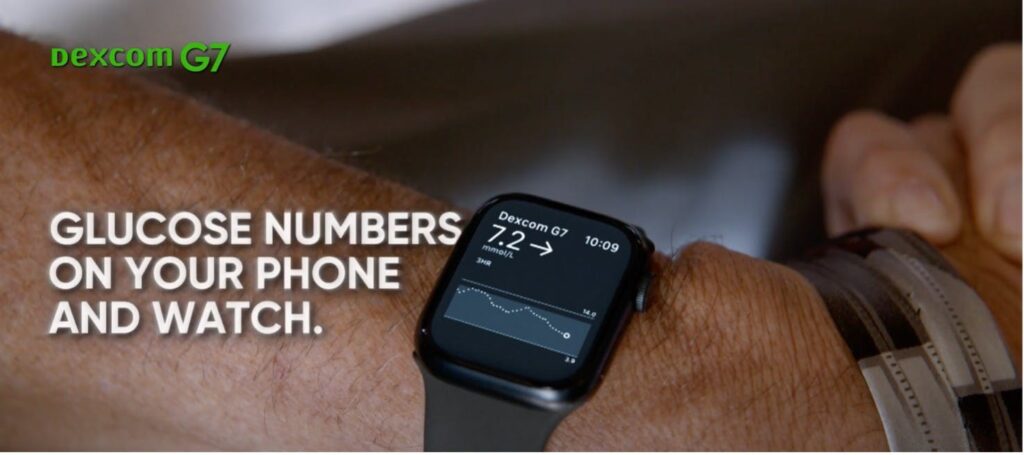
There are other campaigns that have enjoyed for different reasons – for example at Dexcom, awareness of our product saves people’s lives. It’s not often as a marketer you can say that. Not long after joining Dexcom we ran our first CGM (Continuous Glucose Monitor) campaign, and received written letters of thanks; the benefit of the product was helping individuals live more empowered lives.
In Germany, as a thank you, a customer painted a beautiful picture that we framed in the reception. This is ‘off the scale advocacy’, and when you know you’re doing something special.
LGC: Have you any tips on how to navigate the choppy waters of a big business organisation for example, when considered marketing gets pushed back by the C-suite or ‘upstairs’.
JB: This is where ROI is so key and where digital marketing is a fantastic tool. The way to get to the point where you don’t get pushed back in the first instance is by building alignment with Sales and Finance leaders, two influencial allies a marketer can have.
Before developing a big campaign, I’ll typically present the marketing plan to all of the sales teams as well as the marketing teams. Separate meetings, taking all questions and being completely transparent. It means spending more time to get the buy-in, but Marketers are now business leaders, strategically driving the growth of any organisation, and that necessitates sharing plans and eliciting feedback.
When presenting to the C-suite, it also helps a lot if you’ve had a history of successful marketing and driving revenue. This way, they understand you and know the work that you’re doing delivers. Getting that ‘buy in’ before pitching to the C suite, when you’re requesting budget for a campaign is key.
It’s crucial that you get finance on board early on in the budgeting process, with a clear explanation of what you’re trying to achieve. Presenting the plan, being clear on the numbers. It’s good to reiterate the plan at quarterly and half-yearly meetings, too. Being prepped for finance is vital, it’s their job to validate and understand what the firm can generate in revenue from releasing a budget.
With digital mailer campaigns for example, a Marketer will know how many prospects open an email, how many are read, how many respond. We know our expected CPMs vs results with adverts. These are the metrics that speak to the finance team.
I’ve had to explain the basics of ‘paid search’ as a marketing tool. An FD may not know anything about paid search or how paid search works. Once you have invited them in to examine the metrics they’ll have a sense of ownership, and celebrate marketing success, having developed co-ownership of a campaign.
In summary, you need to share your plans with key divisional heads and get buy-in before a key presentation or request an marketing budgets. Sharing of the information and explaining how some basic things, in my experience, overcomes push backs.
LGC: There seems to be a return to marketing diligence, as opposed to what Mark Ritson calls ‘tactification’ – when marketers are ordered to leapfrog research and strategy and just ‘make marketing stuff’. So what message might you have for those who are tempted to leapfrog?
JB: If it’s career limiting – get it done. In an ideal world, data is your everything – especially if you are going to try and show where it may not be the prudent decision to launch a product line without research.
I often talk about marketing as being a profit centre rather than a cost centre. Using research, providing data and showing where, if we actually target the right segments, we can have a better return on investment and drive growth for the business as opposed to a scattergun approach, but every company and marketing situation is different.

LGC: I find that when working as a consultant, if you are at odds with the planned approach, you can say, “I love you, I’ll die by your side. But I just need you to acknowledge what I said”.
JB: That’s a great approach. Sometimes I’ve had people outside of the marketing team say to me: “we’ve always done it this way” or, or “that just can’t be done”. In these situations, if people fight for their limitations, they get to keep them. And we won’t move forward.
Running a marketing department is like running a business. You have to navigate a P&L, grow market share, retain your team and create a great working environment. You have to balance all of these components.
Marketing is a science and when we build on established data, it shows other scientists that we have this ‘value add’.
These days, marketers need to be more serious about the business as a whole. Our contribution is key and today it’s scientific. We have data, we make experiments ie AB testing. There are peer reviews on our work in terms of awards. We then review again through feedback. The process and marketing industry as a whole is moving to become more data and science-led and in time it’ll lead to more future CEOs coming from Marketing.
LGC: If there’s one thing you’ve learned about marketing – it is?
JB: Marketing creates intention in people via messaging, creative and stories – it’s just like making friends or seducing strangers.
